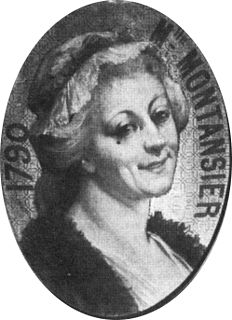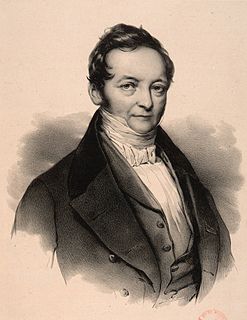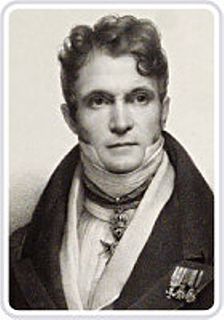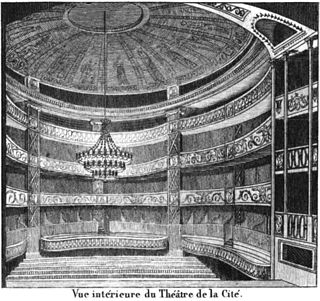
The Théâtre National de la rue de la Loi was a Parisian theatre located across from the Bibliothèque Nationale de France on the rue de la Loi, which was the name of the rue de Richelieu from 1793 to 1806. [1] The theatre was built by the actress and theatre manageress Mademoiselle Montansier, and opened on 15 August 1793. [2] It was designed by the architect Victor Louis and had a capacity of 2,300 spectators. [3] The theatre was demolished in 1820, and its former site is now the Square Louvois. [2]

Paris is the capital and most populous city of France, with an area of 105 square kilometres and an official estimated population of 2,140,526 residents as of 1 January 2019. Since the 17th century, Paris has been one of Europe's major centres of finance, commerce, fashion, science, and the arts.

Rue de Richelieu is a long street of Paris, starting in the south of the 1st arrondissement, ending in the 2nd arrondissement. For the first half of the nineteenth century, before Baron Hausmann redefined Paris with grand boulevards, it was one of the most fashionable streets of Paris:

Marguerite Brunet, known by her stage name of Mademoiselle Montansier, was a French actress and theatre director.
The theatre served as the principal home of the Paris Opera from 26 July 1794 to 13 February 1820 during which time it was known variously as the Théâtre des Arts (1794), the Théâtre de la République et des Arts (1797), again as Théâtre des Arts (1803), the Académie Impériale de Musique (1804), the Académie Royale de Musique (1814), again as Académie Impériale de Musique during the Hundred Days of Napoleon, and finally again as the Académie Royale de Musique (1815–1820). The theatre has also been referred to as the Montansier opera house. [4]

The Paris Opera is the primary opera and ballet company of France. It was founded in 1669 by Louis XIV as the Académie d'Opéra, and shortly thereafter was placed under the leadership of Jean-Baptiste Lully and officially renamed the Académie Royale de Musique, but continued to be known more simply as the Opéra. Classical ballet as it is known today arose within the Paris Opera as the Paris Opera Ballet and has remained an integral and important part of the company. Currently called the Opéra National de Paris, it mainly produces operas at its modern 2700-seat theatre Opéra Bastille which opened in 1989, and ballets and some classical operas at the older 1970-seat Palais Garnier which opened in 1875. Small scale and contemporary works are also staged in the 500-seat Amphitheatre under the Opéra Bastille.
Other names have included Salle de la rue de la Loi, Salle de la rue de Richelieu, Salle Montansier, and Théâtre Montansier, although the latter two names have also been used to refer to several other theatres built or managed by Montansier.












